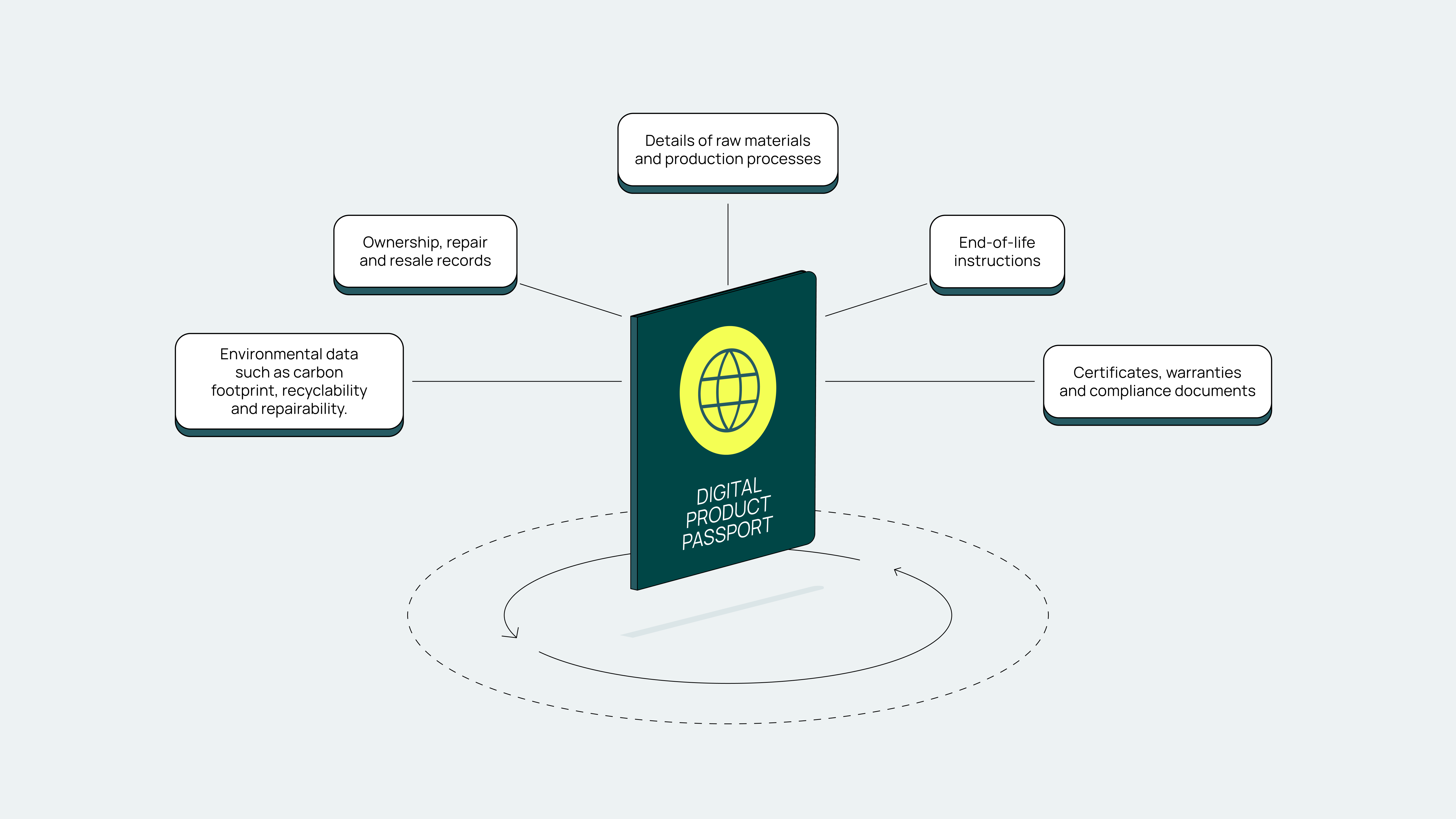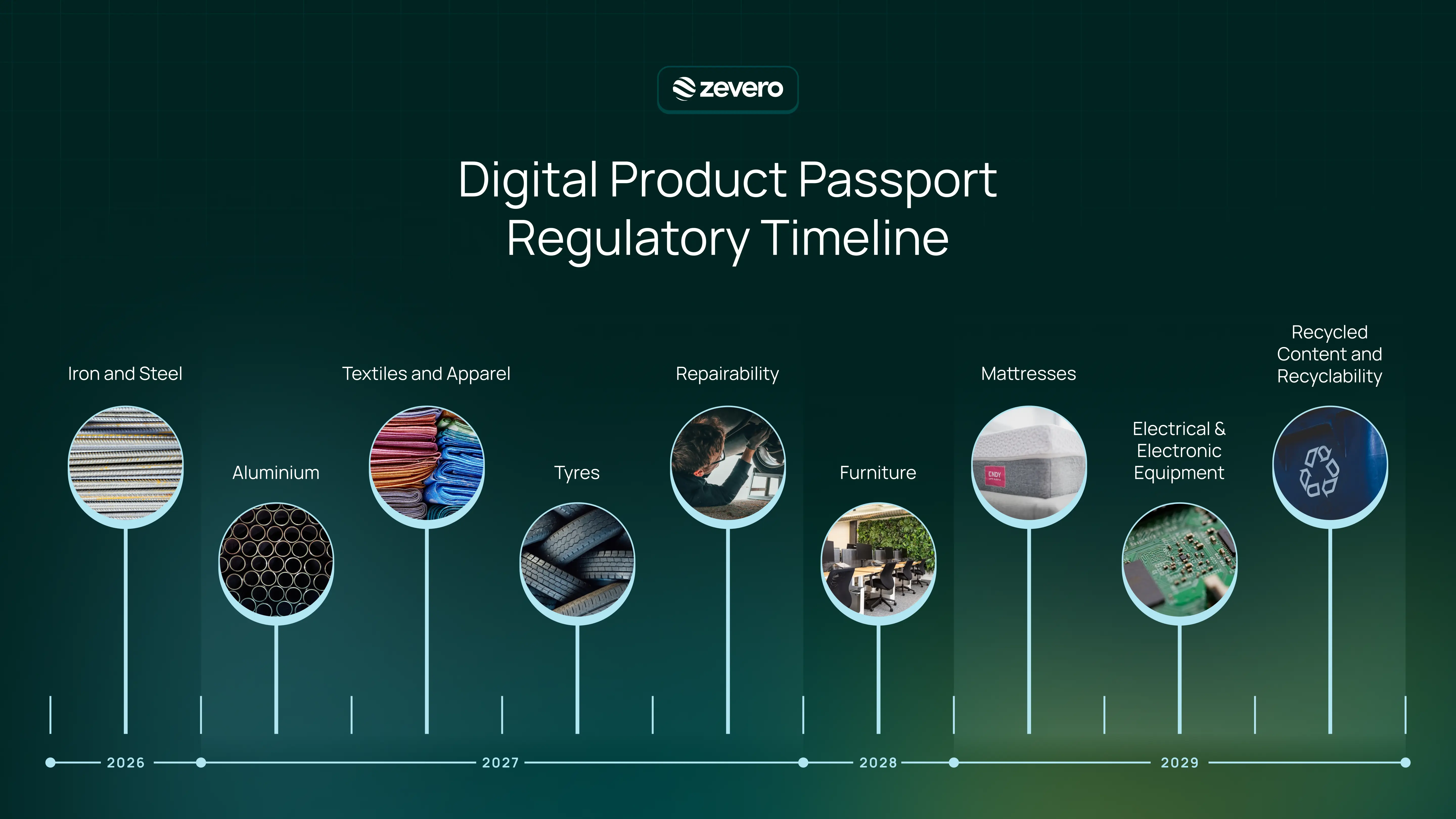How products are designed, sold and recycled in the European Union is changing rapidly. One of the most ambitious developments is the Digital Product Passport (DPP), a system that will make product data transparent, traceable and verifiable across entire supply chains.
For businesses selling in the EU, the DPP marks a shift towards accountability, where every product carries digital proof of its materials, origins and environmental impact. For consumers, this means being able to see and trust the story behind the products they buy.
What is a Digital Product Passport, and how does it work?
A Digital Product Passport (DPP) is an electronic record that contains verified data about a product’s materials, production, and lifecycle. It is designed to make supply chains more transparent by sharing accurate information with consumers, manufacturers, regulators and recyclers.
Each DPP acts as a digital identity for a product. It can be accessed through a machine-readable identifier, such as a QR code or RFID tag, that links to a secure database containing information such as:
- Details of raw materials and production processes
- Environmental data such as carbon footprint, recyclability and repairability
- Ownership, repair and resale records
- End-of-life instructions
- Certificates, warranties and compliance documents

This information is standardised and machine-readable, which means it can be shared and updated across borders and industries throughout a product’s life.
According to the European Commission, the DPP will become a cornerstone of sustainable production in the EU, enabling a shift from linear supply chains to circular, data-driven systems. Each passport is designed to be continuously updated throughout a product’s life, for example, after repairs or sale, to maintain a complete and transparent record of its journey.
Why has the EU introduced Digital Product Passports?
The DPP forms part of the European Green Deal and the Circular Economy Action Plan, which are both designed to make sustainable production the default across the EU.
Currently, the majority of environmental product claims in Europe are unverified. The European Commission found that over 50% of green claims are vague or misleading, while 40% are made without supporting evidence.
Digital Product Passports aim to fix this by creating a single source of verified product data. They make it easier for consumers to trust environmental information, for businesses to prove compliance, and for policymakers to measure progress towards sustainability goals.
DPPs will also help fight greenwashing by ensuring that claims about materials, emissions or recycling are backed by accessible, auditable data.
The role of the Ecodesign for Sustainable Products Regulation (ESPR)
The Ecodesign for Sustainable Products Regulation (ESPR) is the EU law that provides the framework for Digital Product Passports. It replaces the older Ecodesign Directive, expanding its scope beyond energy-related products to include nearly all goods sold in the EU.
The regulation will be rolled out in phases, with timelines varying by industry. Companies that sell regulated products in the EU, whether they are EU-based or international exporters, must comply with these requirements.
Which materials and sectors will be covered first?
The European Commission’s latest working plan (2025–2027) has identified the first product groups to require Digital Product Passports. These categories were prioritised based on market size, environmental impact and potential for circularity improvements.
The plan distinguishes between:
- Final products – end-use goods sold to consumers, such as textiles and furniture.
- Intermediate products – industrial materials used to make other goods, such as iron, steel and aluminium.
- Horizontal requirements – cross-sector measures like repairability or recycled content standards that apply across multiple product categories.
The table below is from the working document by the EU, which outlines the proposed implementation timelines. The full document can be found here.

Who will be affected by DPP requirements?
The scope of the Digital Product Passport (DPP) is global in nature. It doesn’t depend on a company’s size or location but on whether products are sold within the European Union. If you sell relevant goods on the EU market, regardless of where they are manufactured, you will be required to comply.
It will apply to:
- Manufacturers and brands producing goods sold in the EU, so it will affect a lot of companies
- Suppliers and subcontractors providing materials, components or packaging
- Retailers and distributors sharing product data with consumers
- Exporters outside the EU selling products into the European market
Because DPP data covers a product's full lifecycle, every part of the supply chain will need to contribute accurate information. Collaboration and data alignment will be central to compliance.
For global businesses manufacturing outside the EU, the DPP is both a challenge and an opportunity. Aligning product and supply chain data early can help streamline compliance, strengthen relationships with European partners, and build long-term trust through transparency.
How DPPs will change business operations
Digital Product Passports represent both a compliance challenge and a strategic opportunity for businesses.
Competitive advantage
Early adopters can use DPPs to demonstrate transparency and leadership in sustainability, enhancing consumer trust and meeting the growing expectations of retailers and investors.
Data collection and traceability
Businesses may need to collect, store and share large amounts of data about their products, depending on the size of the business. It may be necessary to upgrade data systems to manage the flow of information.
Supply chain collaboration
The introduction of digital product passports will require closer collaboration between suppliers, manufacturers and retailers. Because supply chains often span multiple regions, cross-border data sharing will be key to maintaining consistency and compliance. Data gaps or inconsistencies in one area could compromise compliance for the entire product.
Costs and efficiency gains
Although initial implementation costs may be high, digital data management can reduce long-term administrative costs, improve resource efficiency and strengthen sustainability reporting.
What does DPP mean for consumers?
For consumers, digital product passports will make sustainability visible and verifiable. Scanning a product label will show where it was made, what it contains and how it can be repaired or recycled.
The DPP could also transform the second-hand and refurbished goods market. Buyers will be able to see an item’s repair history, warranty information and authenticity in seconds, helping build trust in circular business models.
Preparing for Digital Product Passport compliance
The rollout of digital product passports will require better product data, stronger supply chain collaboration and new digital systems. To prepare, businesses can focus on these key areas:
- Understand your data
Identify what product and material data you already collect, and where there are gaps or where the data quality isn’t high. - Collaborate across your supply chain
Engage suppliers and partners early to align on how information will be shared, verified and updated. - Invest in digital systems
Explore tools that support lifecycle data management and traceability to simplify compliance and reporting. - Stay ahead of regulation
Monitor updates from the European Commission and national authorities as sector-specific requirements are released.
Preparing early will help reduce compliance risk, build resilience and make it easier to meet new reporting and transparency standards under the ESPR.
How Zevero can help
Preparing for a Digital Product Passport starts with having accurate product and supply chain data. Zevero helps businesses automate data collection across their operations to build a reliable foundation for compliance and reporting.
Our platform and expert team support companies globally to measure product-level carbon footprints, align data collection with ESPR and DPP requirements, and improve transparency across suppliers and operations. With a growing presence in key international markets such as Japan and Singapore, Zevero also helps exporters align with EU standards and prepare for evolving global regulations.
Whether you are preparing for your first DPP, mapping product data or working toward wider ESG goals, Zevero helps you every step of the way. To learn more about our approach, click here.
The bottom line
The Digital Product Passport marks a turning point for product transparency and sustainability in Europe, but its impact will reach far beyond. As one of the first frameworks of its kind, it is expected to shape how businesses around the world manage product data, supply chain traceability and compliance.
Companies that prepare early, by investing in traceable data, supplier collaboration and digital systems, will not only stay compliant but also gain a clearer view of their supply chains and a stronger connection with consumers who value transparency.
The transition to DPPs will take time, but it signals an important shift towards accountability, innovation and circularity. In the years ahead, businesses that adapt now will be better positioned to compete globally as sustainable production and trade standards continue to align across markets.

.jpg)
